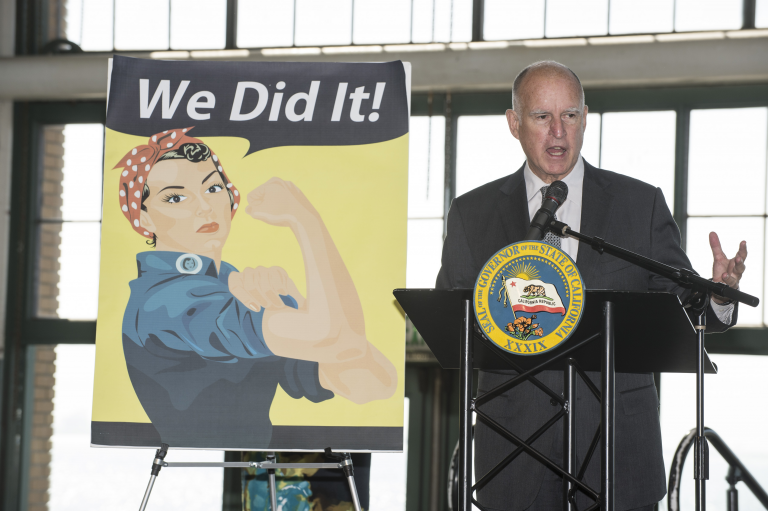-

Five years in the making, the EEOC has finally released its guidance on leave as a reasonable accommodation. It reaffirms employers’ obligations and provides clarity where it was sorely needed.
Background
When employees need medical leave, they will often request time off under the Family and Medical Leave Act (FMLA) (or, in California, the California Family Rights Act (CFRA)). But what many employees—and some employers—don’t know is that laws other than FMLA and CFRA may require employers to provide medical leave, including the Americans with Disabilities Act of 1990 (ADA) and California’s Fair Employment and Housing Act (FEHA).
Under the ADA and FEHA, employees may be entitled to medical leave for disability-related issues:
- Even if they work for small employers that are not covered by the FMLA/CFRA;
- Even if they are not eligible for FMLA/CFRA (for example, if they have not worked for the employer for at least a year or has not worked 1250 hours); and
- Even if they have already exhausted their 12-weeks of FMLA/CFRA leave.
In June 2011, the EEOC held a meeting to discuss the issue of leave as a reasonable accommodation under the Americans with Disabilities Act. The invited speakers unanimously agreed that both employees and management would benefit from clear and uniform guidance on the subject. While the guidance was forthcoming, I published an article titled Leave As A Reasonable Accommodation Under The Americans With Disabilities Act, which explored various issues that keep coming up in this context. The EEOC’s guidance confirms that employers must be mindful of their obligations to accommodate disabled employees, including by providing unpaid leave. Note, too, the California employees may be. . .
-

Mizrahi Law is pleased to announce that founder Ramit Mizrahi has once again been selected for two highly prestigious lists:
- Super Lawyers® Up-and-Coming 100: Southern California Rising Stars 2016, and
- Super Lawyers® Up-and-Coming 50: Women Southern California Rising Stars 2016.

This is the second year that Super Lawyers has identified its most highly rated Rising Stars on top 50 and top 100 lists.
This also marks the fourth year that Ramit Mizrahi was selected a Super Lawyers® Southern California Rising Star. Only the top 2.5% of eligible attorneys in Southern California are selected as Super Lawyers Rising Stars, reflecting peer recognition of excellence in practice.
Ms. Mizrahi’s selection as one of the top 100 Rising Stars and top 50 Rising Stars women–already a highly select group of attorneys–reflects that she is highly respected among her peers and is one of the top-rated attorneys in Southern California.
Ms. Mizrahi remains committed to serving as a tenacious advocate for her clients while working to build collegiality and community in the legal profession.
-

Update 9/4/16: On August 29, 2016, the Court of Appeal issued an opinion on rehearing that retreated from its prior holding that the FEHA creates a duty to provide reasonable accommodations to an applicant or employee who is associated with a disabled person. However, the opinion still holds that the trial court erred in granting summary judgment to the defendant on the plaintiff’s claims for associational disability discrimination, failure to prevent discrimination, retaliation, and wrongful termination in violation of public policy. The court indicated that, given that the plaintiff has abandoned his failure to accommodate cause of action, it would not decide the point. It noted, however, that “when section 12940, subdivision (m) requires employers to reasonably accommodate ‘the known physical … disability of an applicant or employee,’ read in conjunction with other relevant provisions, subdivision (m) may reasonably be interpreted to require accommodation based on the employee’s association with a physically disabled person.” Because the cause of action was abandoned, “[w]e only observe that the accommodation issue is not settled and that it appears significantly intertwined with the statutory prohibition against disability discrimination. . . .” I leave the below analysis as a discussion of what could have been a dramatic expansion of rights for California workers who care for disabled relatives, reflecting an issue that continues to remain undecided for now.
A new case—Castro-Ramirez v. Dependable Highway Express, Inc. (2016) 246 Cal.App.4th 180—dramatically expands the rights of California employees who care for disabled relatives. It holds that the California Fair Employment and Housing Act (FEHA) creates a duty for employers to provide reasonable accommodations to an employee who is associated with a disabled person.
Background
Employees with disabilities have long been protected in the workplace, including by the FEHA and by the Americans with Disabilities Act (ADA). They are protected from discrimination, retaliation, and harassment based on their disabilities. In addition, employers must take affirmative steps to accommodate them to enable them to work. If a qualified employee with a disability requests a reasonable accommodation, the employer must provide it unless it “can demonstrate that the accommodation would impose an undue hardship on the operation of its business.” There are many types of reasonable accommodations, such as job restructuring and changes to job duties, modified schedules, reassignments, use of specialized equipment, and medical leave.
Employees have also been protected from discrimination based on their relationship or association with a person with a known disability. This includes discrimination based on unfounded fears and stigmas (for example, against someone whose partner has HIV) and discrimination based on assumptions that employees might not be as available because of their caregiving obligations (for example, against a parent whose child has special needs).
However, until recently, employers’ obligations to provide workplace accommodations to people who care for those with disabilities were limited.
-

On May 7, 2016, Ramit Mizrahi will be speaking about the top discovery issues in employment law. The panel, titled “Here we go again! Common discovery issues with no easy answers,” will be part of the Los Angeles County Bar Association Labor & Employment Annual Retreat & Section Meeting.
Date and time: May 7, 2016, 11:30 a.m.
Location: Omni Rancho Las Palmas Resort & Spa, 41000 Bob Hope Drive, Rancho Mirage, California 92270
Additional information can be found on the LACBA website.
-
12 Apr '16

Women earn an average of 79 cents per dollar as compared to their male peers. At that rate, a woman would have to work from January 1, 2015 to today (April 12, 2016) to earn the same amount as her male peer did in 2015!
Equal Pay Day is an opportunity to reflect on the reasons why women still earn less on average than their male peers — and the remedies available to us.
There are many factors that cause women to earn less than their male peers, including sex segregation at work, implicit biases, and penalties that women pay for caregiving.
Fortunately, we are making inroads toward addressing these issues. The Fair Pay Act will hopefully make a tremendous difference in California, as employers are now required to justify any pay disparities between men and women doing comparable work. I expect that as employers scrutinize their pay practices, they will put into place objective criteria that ensure that workers are paid fairly, and will provide equity adjustments to female workers who are underpaid relative to their male peers without justification. The EEOC’s proposal to collect pay data would also shine a light on employers’ pay practices to ensure that there are not unjustifiable disparities in pay among the various protected classes of people.
Other exciting changes are afoot, including moves toward expanding paid leave to workers in San Francisco and New York. As more mothers and fathers have access to paid leave (and are encouraged to take it), women will be less likely to be penalized at work for taking time off for caregiving work (and men will have greater freedom to take leave).
Also exciting is the move toward a $15 minimum wage in California.
While Equal Pay Day is generally not a “happy” day, there is much to be happy about this year!
-

Registration is now open for the State Bar of California’s 33rd Labor & Employment Law Annual Meeting, which will be held at the beautiful Claremont Club & Spa in Berkeley, CA on April 21, 2016. It will be followed by the 22nd Annual Public Sector Conference on April 22, 2016. (You can register for one or both days.)Ramit Mizrahi is honored to be both the Co-Chair and a sponsor of the Annual Meeting, which promises to bring together several hundred of the top California labor and employment lawyers for an excellent educational and networking event. Highlights of the Annual Meeting will include:
- A keynote address by the Hon. Brad Seligman, Superior Court of Alameda County;
- A review of the year’s most significant employment cases;
- A plenary session with Stanford Law Professor Deborah Rhode on The Trouble with Lawyers (and how we can improve satisfaction in the legal profession);
- A plenary session on trial opening statements, presented by two top trial lawyers;
- Concurrent panels covering the following topics: the newest developments in wage and hour law, accommodating mental disabilities in the workplace, the evolving role of NLRB in today’s workplace, ethical issues in employment litigation, comparative law, and workplace retaliation;
- An evening networking reception;
- And much more!
Thursday-Friday, April 21-22, 2016
Claremont Club and Spa
1 Tunnel Road, Berkeley, CA -

An estimated 0.3% of adults are transgender. Many face pervasive harassment, discrimination, violence, and abuse in every aspect of their lives, including at work, in housing, education, healthcare, and personal relationships. Consider the discrimination suffered by transgender individuals at work. According to a comprehensive 2011 report titled “Injustice At Every Turn: A Report of the National Transgender Discrimination Survey“:- 90% of transgender individuals surveyed reported experiencing harassment, mistreatment or discrimination on the job or took actions like hiding who they are to avoid it.
- 47% said they had experienced an adverse job outcome, such as being fired, not hired or denied a promotion because of being transgender or gender non-conforming.
- Over one-quarter (26%) reported that they had lost a job due to being transgender or gender non-conforming and 50% were harassed.
- Large majorities attempted to avoid discrimination by hiding their gender or gender transition (71%) or delaying their gender transition (57%).
- Overall, 16% said they had been compelled to work in the underground economy for income (such as doing sex work or selling drugs).
- Respondents who had lost a job due to bias also experienced ruinous consequences such as four times the rate of homelessness, 70% more current drinking or misuse of drugs to cope with mistreatment, 85% more incarceration, more than double the rate working in the underground economy, and more than double the HIV infection rate, compared to those who did not lose a job due to bias.
- A staggering 41% of respondents reported attempting suicide compared to 1.6% of the general population, with rates rising for those who lost a job due to bias (55%), were harassed/bullied in school (51%), had low household income, or were the victim of physical assault (61%) or sexual assault (64%).
California has protected transgender employees from workplace and housing discrimination since before 2003. It has done so through the Fair Employment and Housing Act (FEHA), which prohibits discrimination, harassment, and retaliation based on certain protected categories. However, many Californians remain unaware that transgender employees are protected from workplace discrimination. To help educate workers and employers, the California Legislature made these protections explicit in 2003 and 2011. And, this week, California’s Department of Fair Employment and Housing issued guidance . . .
-

Thanksgiving is a special time of year where we share time with our loved ones and reflect on the things for which we are most grateful. In that spirit, here are five reasons that California employees can celebrate this year:
1. The California Fair Pay Act
The California Fair Pay Act will take effect in January 2016, dramatically strengthening California’s Equal Pay Act. As I previously discussed in greater depth, the Fair Pay Act will help women receive equal pay for “substantially similar” work (not just “equal work”), including by eliminating loopholes, enacting strong anti-retaliation provisions, and mandating that employers keep pay records for three years. By requiring that employers have legitimate justification for pay disparities, the Fair Pay Act will help narrow the gender pay gap that now leaves women earning a mere 82% of what their male peers earn.
2. Minimum Wage Increases
On January 1, 2016, California’s minimum wage will increase from $9 per hour to $10 per hour statewide. This will raise the minimum compensation needed to be exempt from overtime to $41,600 per year (two times the state minimum wage for full-time employment).
The minimum wage in the City of Los Angeles will increase to $10.50 an hour in July 2016 (with small businesses and nonprofits on a modified schedule), and will then slowly rise until it reaches $15 an hour by 2020. These increases will help lift working families in California out of poverty and will help revive impoverished areas. The movement to raise the minimum wage throughout the State and throughout the country continues!
3. Expansion of “Associational” Retaliation Protections for Family Members
California has strong protections for workers who engage in activity protected under the Labor Code. Employers are prohibited from terminating them, retaliating against them, or taking any adverse actions against them. AB-1509, signed into law in October, provides protections for an employee who is a family member of a person who engaged in, or was perceived to engage in, protected conduct under the Labor Code. It also protects employees from retaliation by “controlling employers” and “client employers” (for example, when a general contractor retaliates against the employee of a subcontractor, or when a client of a labor contractor tells the contractor not to send a certain employee over for retaliatory reasons).
-

On Tuesday, October 6, Governor Brown signed SB 358 (Jackson), the California Fair Pay Act. The Act, aimed at addressing the gender pay gap, will be the nation’s toughest. It seeks to ensure that women are paid equally for performing substantially similar work, and protects employees from retaliation for disclosing/discussing wages or seeking to enforce their rights. Credit goes to Senator Hannah-Beth Jackson (D-Santa Barbara) for authoring the bill, which had wide bipartisan support, and to co-sponsors
Equal Rights Advocates, California Employment Lawyers Association, and Legal Aid Society-Employment Law Center.The Fair Pay Act Strengthens Existing Law
California’s Equal Pay Act, Labor Code section 1197.5, was first enacted in 1949 and revised in 1985. It is similar to the federal Equal Pay Act of 1963. The Fair Pay Act bolsters the California Equal Pay Act in the following ways:
1. It provides for equal pay for “substantially similar work,” not just equal work in the same establishment.
This means that a woman need not hold the exact job as her male comparators to seek equal pay. Instead, the works needs to be “substantially similar work, when viewed as a composite of skill, effort, and responsibility, and performed under similar working conditions.”
2. It eliminates loopholes and limits employers defenses when a wage differential is challenged.
Previously, the following four defenses were permitted:
-

Noe v. Superior Court, 237 Cal. App. 4th 316 (2015)
Noe v. Superior Court, a California Court of Appeal case decided in June, holds that co-employers who are aware that employees are being misclassified as independent contractors, and fail to remedy it, can be held liable themselves. This case confirms that employers cannot get away with treating employees as independent contractors simply by hiring another company to officially employ and pay them.
Anschutz Entertainment Group (AEG), which owns several entertainment venues in Southern California, contracted with Levy Premium Foodservice (Levy) to provide food and beverage services at AEG’s venues. Levy, in turn, entered into a labor agreement with a group of affiliated companies (Canvas) to provide vendors to sell food and beverages at events. Canvas then hired the vendors and treated and paid them as independent contractors. Levy was aware of this, as its Human Resources representative had acknowledged in an email that Canvas only paid the vendors on a commission basis and questioned whether this practice violated wage and hour requirements. Levy also directly hired some of the vendors and classified them as employees.
In 2013, several of Canvas’s former vendors filed a wage and hour class action lawsuit against Canvas, Levy, and AEG for failure to pay minimum wages and willful misclassification as independent contractors in violation of Labor Code section 226.8. Plaintiffs contended that each of the defendants was liable as a “joint employer.”
AEG and Levy filed motions for summary judgment. They argued, . . .
